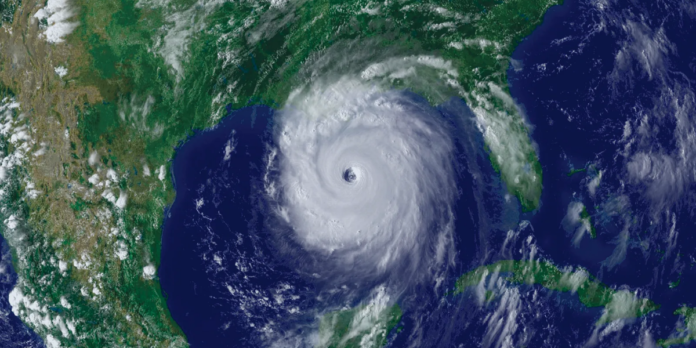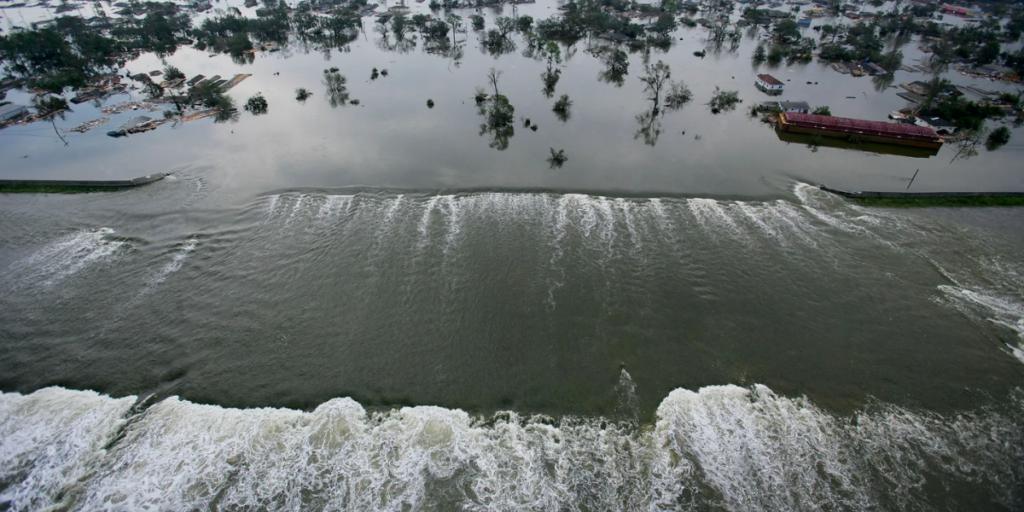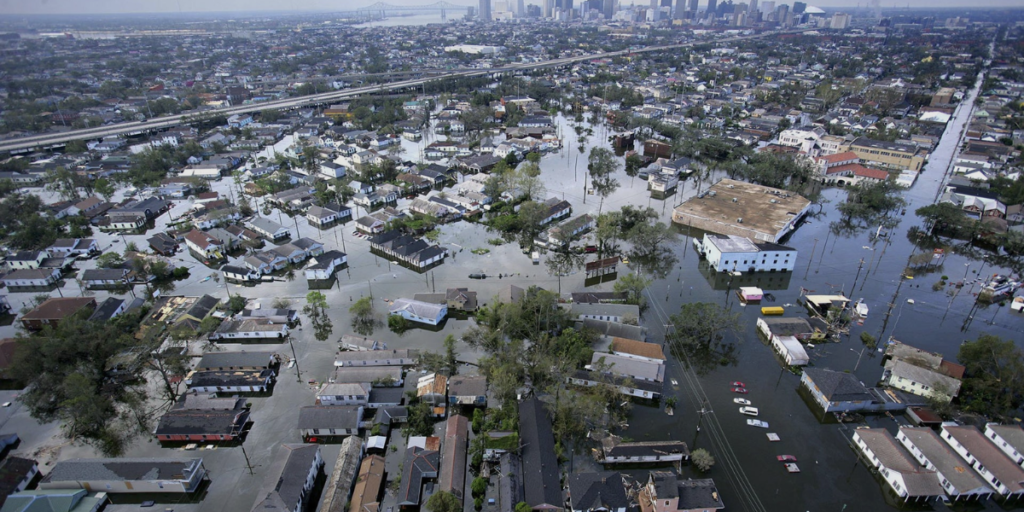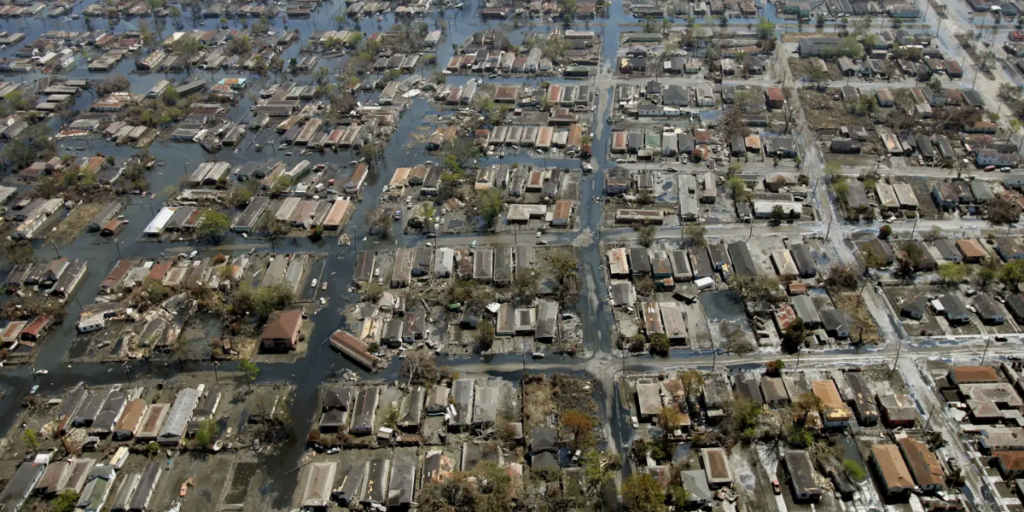Hurricane Katrina, which struck the Gulf Coast in August 2005, remains one of the most devastating natural disasters in American history. This hurricane was a meteorological event and a societal catastrophe that exposed significant vulnerabilities in disaster preparedness, response, and social inequalities in the United States.
Formation and Path
Katrina began as a tropical depression in the southeastern Bahamas on August 23, 2005. It quickly intensified into a tropical storm and was named Katrina the next day. By August 25, Katrina had strengthened into a Category 1 hurricane and made its first landfall in southern Florida, causing flooding and power outages. After moving into the Gulf of Mexico, the warm waters fueled Katrina’s rapid intensification, and it reached Category 5 status on August 28 with peak winds of 175 mph.
On the morning of August 29, Katrina made landfall near Buras, Louisiana, as a Category 3 hurricane with winds of 125 mph. It then struck near the Mississippi-Louisiana border, causing widespread destruction. The storm was felt across multiple states, but the greatest devastation occurred in New Orleans and along the Mississippi coast.
Impact on New Orleans
New Orleans, situated below sea level and surrounded by water, was particularly vulnerable. The city’s complex system of levees and floodwalls, designed to protect against flooding, failed catastrophically. The levee breaches led to the inundation of approximately 80% of New Orleans. The Lower Ninth Ward and St. Bernard Parish were among the hardest-hit areas, where floodwaters rose rapidly, trapping many residents.
The immediate impact on New Orleans was apocalyptic. Thousands of people were stranded on rooftops, in attics, and in shelters, awaiting rescue. The Superdome and the New Orleans Convention Center, designated as shelters of last resort, became scenes of overcrowding and desperation. The floodwaters remained for weeks, leading to unsanitary conditions, disease, and further fatalities.
Human Toll
Hurricane Katrina caused over 1,800 deaths, making it one of the deadliest hurricanes in U.S. history. The majority of the victims were in Louisiana, with a significant number in Mississippi. The storm also displaced over a million people, leading to the largest diaspora in the United States since the Dust Bowl of the 1930s.
Economic Damage
The economic impact of Katrina was staggering. The total cost of the hurricane was estimated at $125 billion, making it the costliest natural disaster in U.S. history at the time. The storm destroyed or severely damaged over 300,000 homes, numerous businesses, and critical infrastructure. The oil and gas industry, crucial to the Gulf Coast economy, was severely disrupted, leading to spikes in fuel prices nationwide.
Federal and Local Response
The response to Hurricane Katrina exposed significant flaws in disaster preparedness and emergency management at both federal and local levels. The Federal Emergency Management Agency (FEMA) was widely criticized for its slow and ineffective response. Delays in delivering aid, coordinating evacuations, and providing necessities like food and water contributed to the suffering of many residents.
Local governments also faced criticism for their handling of the crisis. The city of New Orleans and the state of Louisiana were criticized for their evacuation plans, which did not adequately provide for the most vulnerable populations, including the elderly, poor, and disabled.
Social and Racial Inequities
Katrina laid bare the deep social and racial inequalities in the affected areas. The hardest-hit neighborhoods were predominantly African American and low-income. The failure of the levee system disproportionately affected these communities, revealing long-standing neglect and inadequate infrastructure investment. The slow government response further exacerbated these disparities, prompting a national conversation about race, poverty, and disaster response.
Rebuilding and Legacy
In the years following Katrina, New Orleans and the Gulf Coast have made significant strides in rebuilding. The city has invested in stronger flood protection and drainage systems, and new regulations have been implemented to improve disaster preparedness. However, the recovery has been uneven, with some communities still struggling to rebuild.
The legacy of Hurricane Katrina continues to influence disaster management policies in the United States. The storm led to reforms in FEMA and the creation of the Department of Homeland Security’s National Response Framework, aimed at improving coordination and response to future disasters.
Katrina also highlighted the importance of addressing social vulnerabilities and ensuring that all communities are resilient to disasters. The lessons learned from Katrina have informed responses to subsequent hurricanes, such as Harvey, Irma, and Maria, emphasizing the need for preparedness, timely response, and equitable recovery efforts.
Conclusion:
Hurricane Katrina was more than a natural disaster; it was a national tragedy that revealed critical weaknesses in disaster response and social equity. While the physical scars of Katrina have largely healed, the event remains a poignant reminder of the need for comprehensive and inclusive disaster preparedness. The lessons learned continue to shape policies and responses, aiming to prevent a recurrence of such widespread devastation and suffering.





